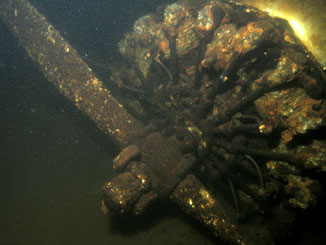SNV-2 Valiant

Vultee SNV-2 Valiant
In 1938 a man named Richard Palmer, who was Vultee Aircraft Corporations Chief Designer, began work on a design for a fighter plane. At around the same time, the US Army Air Corps issued a requirement and design contest for an “advanced trainer”, to train pilots for flight. The prize to the victor of said design would be substantial orders of the aircraft, which in turn meant substantial income and recognition for Vultee and Palmer. The prototype Vultee released was the V-51.
The V-51 made its maiden flight in March of 1939 and soon was entered into the competition in May as the BC-51.
Unfortunately, Palmer and Vultee didn’t win the contest, but the USAAC purchased the BC-51 anyway. Palmer kept up with refinements to the 51 and soon came up with the VF-54 (export market) which was the same as the 51 except for a lower powered engine. No export sales were made.
From the VF-54 evolved the VF-54A. The 54A had fixed gear, and a revised power plant consisting of a single Pratt & Whitney R-985-T3B Wasp Jr. radial. It was called the Vultee BT-13 Valiant.
The USAAC heard of these improvements and in August 1939, 300 of the BT-13 were ordered. The engine was changed though, to a P&W R-985-25 radial. The first of this run was delivered in June of 1940.
Soon there was a BT-13A, and the change consisted of the use of a P&W R-985-AN-1 450 horsepower radial engine instead of the R-985-25, and the lack of landing gear fairings.
The BT-13B’s came next, and differed only by having a 24-volt electrical system, instead of the 12-volt.

During the time the BT-13A’s came out, the Navy was showing interest in getting their hands on some of the trainers. They ordered 1,150 BT-13A’s and named them the SNV-1. With an upgraded electrical system, the Navy ordered some 650 BT-13B’s and named them SNV-2. The Vultee SNV-2 Valiant was born.
The Valiant is a low wing cantilever monoplane of all metal construction with all controls fabric covered. Some later models of the BT-13 built in 1942 were rebuilt with plastic-impregnated plywood (Duramold) in the fuselage, tail section, and wing sections. The process was part of an experiment to replace vital aluminum with less expensive material. It reportedly was heavier than the metal ribbed plane from before. It looks as though the Valiant in Lake Washington is one of those planes with the wood frame.

The Valiant is 28.74 feet long, with a wingspan of 42.19 feet, and is 12.30 feet tall. It was a trainer aircraft carrying 2 passengers, an instructor and trainee, with a maximum speed of 183 mph, and a range of 513 miles. Its service ceiling was 16,503 feet. Pilots generally called it the “Vultee Vibrator” and it was described as a, “roomy, noisy, aerobatic, and smelly airplane”. The Valiant was the second trainer to fly after cadets learned to fly the PT-17 (Stearman), PT-19, or PT-22. The SNV-2 required students to pay more attention during flight, using the blind flying instrumentation (to teach night or bad weather flying). Students were also introduced to using two-way radio for communication with the ground, and the manual operation of the landing flaps (the use of the crank-and-cable system for the large flaps). Unlike the primary trainers that were fitted with a fixed pitch prop, the SNV BT-13 was equipped with a two position, variable pitch propeller requiring greater skill from the cadets to fly.
On February 29, 1944 L.S. Nitka was conducting training exercises with his student, Lt. Carter Perry over Lake Washington when they ran into engine trouble. The Valiant had a continuous canopy with the two pilots sitting in tandem behind dual controls, so it is hard to say who was flying at the time, but they attempted an emergency landing but came in too high and overshot the runway. They attempted to come around again for a second pass but the engine failed completely. The two were forced to ditch the plane, and she went down just north of the then Sandpoint Naval Station. Nitka and Carter made it out of the aircraft unhurt. The Valiant sank immediately and now lays upside-down in approximately 115 feet of water.

The Valiant today is a VERY fragile wreck. The fuselage is covered in the lacquered fabric and is very susceptible to punctures from fins, hands, anchors or descent line weights. If dived, please take EXTREME caution to not damage this priceless relic.

Lake Washington Valiant Photos: Jason Richert



-
-Home
